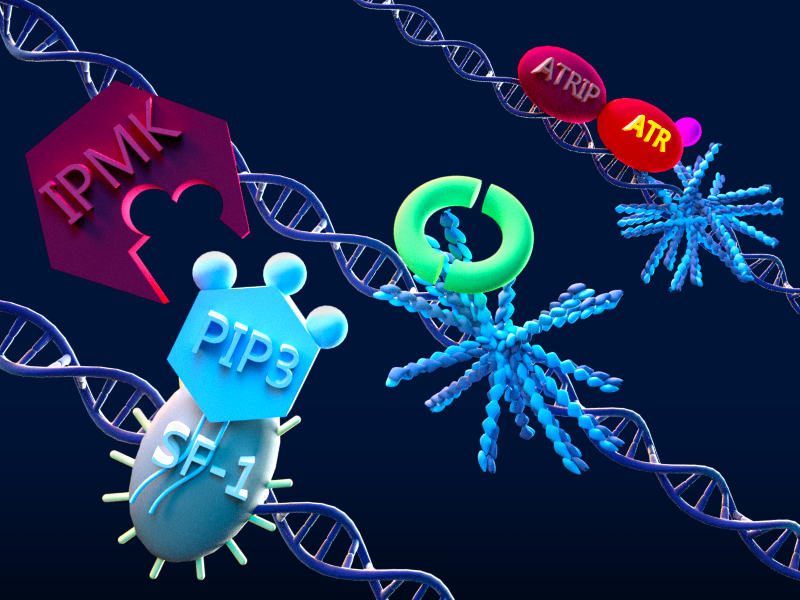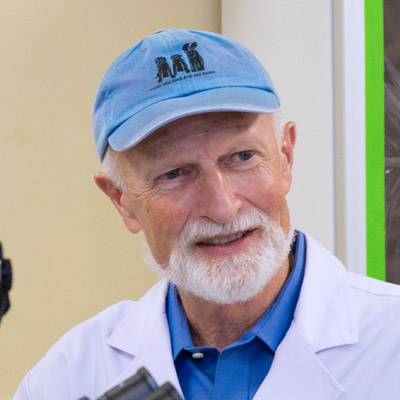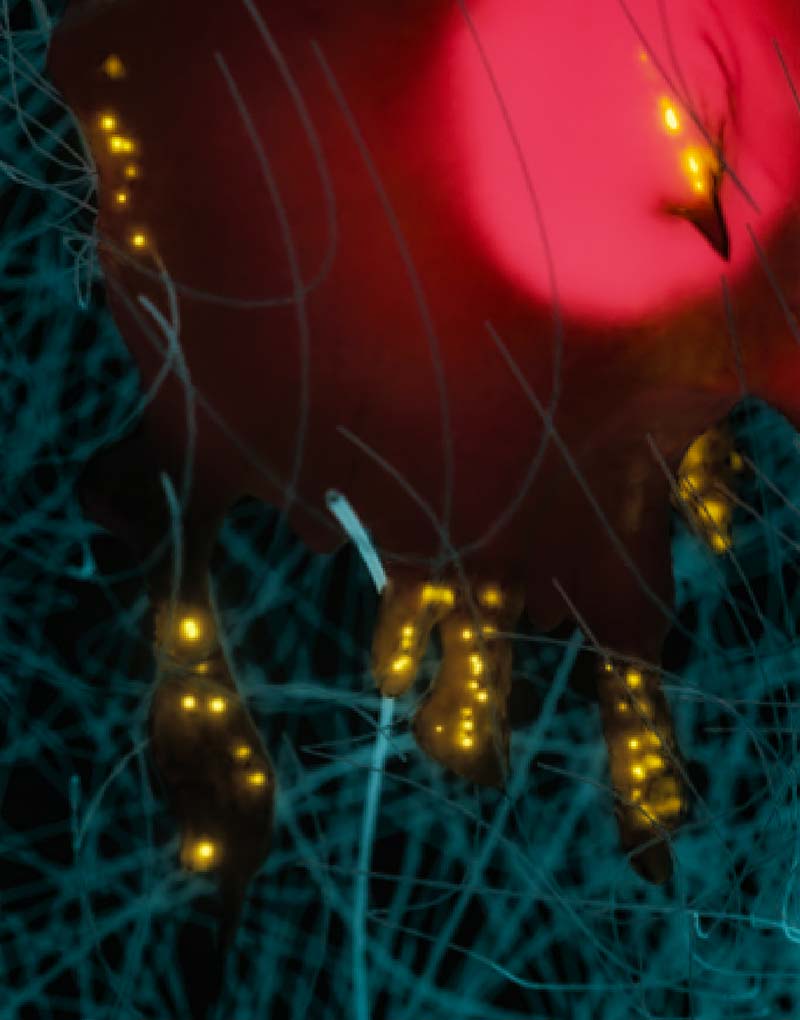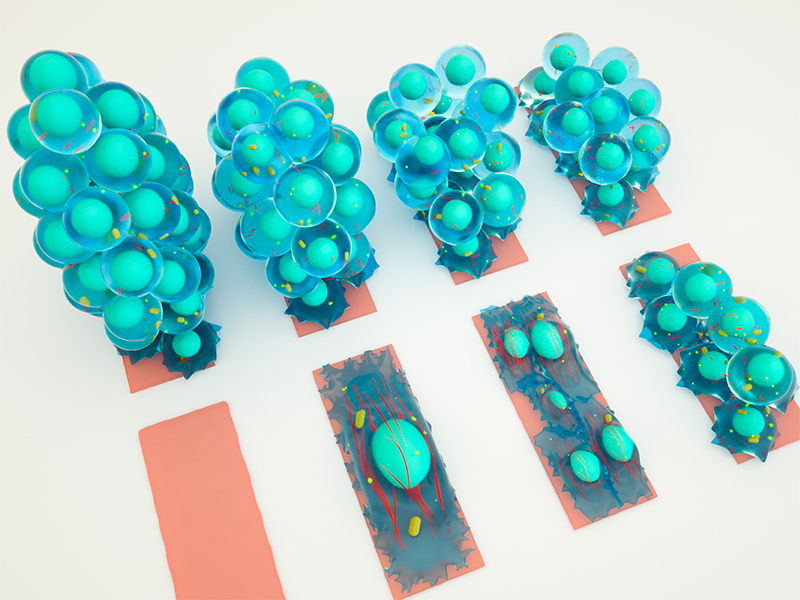Lipid-mediated DNA repair
How phosphoinositides regulate ATR recruitment
Written by Wang Yu-Hsiu and Sruthi Jagannathan | February 2018 | Edited by Steven Wolf. Illustration by Melanie Lee
DNA damage is linked to many health problems, most notably cancer and aging. Researchers at the Mechanobiology Institute, National University of Singapore have discovered a novel role for lipids in the regulation of DNA repair protein recruitment to sites of DNA damage. This study is published in Nature Communications.

IPMK-phosphorylated SF1-PIP3 recruits formins that facilitate nuclear actin filament assembly at DNA damage sites. Nuclear actin filaments mediate the recruitment of DNA repair protein ATR to damage sites, where ATR activates DNA repair pathways such as nucleotide excision repair and homologous recombination repair.
Phosphoinositides: Lipid regulators of cellular functions
Lipids are a diverse group of organic compounds that are characterized by their insolubility in water and solubility in non-polar solvents. One major type, known as the phospholipids, are the chief components of biological membranes. These structures define the boundaries of the cell as well as compartmentalizing the cellular interior. Together with membrane-associated proteins, phospholipids organize into bilayers that define the classical structure of cell membranes.
One class of phospholipids, called polyphosphoinositides (PPIs), have been extensively studied for their role as secondary messengers in several intracellular signaling pathways. This class of lipids are metabolized by several kinases and phosphatases into a family of phosphoinositide derivatives that vary in the number of phosphate groups that they carry. These include PIP, PIP2 and PIP3. A negative charge on the PPIs promotes membrane-protein associations, which is critical for cells to function normally.
Besides serving as vital signaling molecules in the plasma membrane, PPI lipids, specifically PIP2 and PIP3, also mediate processes inside the nucleus, including mRNA slicing and export. In addition to these conventional roles, PPI lipids were also recently linked to another important nuclear function- facilitating DNA damage repair.
What causes DNA damage?
A number of biological or environmental factors can cause damage to DNA by creating breaks or altering its chemical structure. This can then generate errors in the replication and transcription of DNA, and subsequently in the synthesis of proteins. In the absence of efficient DNA repair mechanisms, cells age and die prematurely, or become cancerous.
Using experimental constructs that sequester PPI lipids in the nucleus, we were able to demonstrate the role of PPIs in mediating DNA damage repair.
To help prevent the accumulation of DNA damage, cells rely on the action of dedicated nuclear protein kinases, such as ATM, ATR and DNA-PK to sense DNA damage signals and activate specific repair mechanisms based on the type of damage.
Recently, DNA repair proteins were found to accumulate at sites of DNA damage following the polymerization of nuclear actin. Considering what was understood about the functions of PPI lipids in promoting actin polymerization, these recent findings led researchers to speculate that an interplay between nuclear PPIs, nuclear actin and the recruitment of repair proteins existed during the early stages of the DNA damage response.
This idea was the central theme of a study carried out by Dr. Wang Yu-Hsiu from Professor Michael Sheetz’s lab at the Mechanobiology Institute, National University of Singapore. Together with scientists from NUS and Temasek Life Sciences Laboratory, Singapore and the FIRC Institute of Molecular Oncology, Italy, the team sought to better understand the specific role of PPI lipids in the early stages of DNA repair.
How PPI lipids help in DNA repair
Using a picosecond UV laser to generate localized DNA damage, Wang and colleagues demonstrated that nuclear PPIs accumulated at the DNA within a second of the damage being induced. Formins, which are proteins responsible for the polymerization of actin filaments, subsequently accumulated in the nucleus, where they mediated the assembly of actin filaments at sites of DNA damage. These newly assembled nuclear actin filaments were essential for the recruitment of ATR to the sites of DNA damage.
More interestingly the PPI lipids were found to be indispensable for ATR recruitment. However, they were not required in the recruitment of other DNA repair proteins such as ATM or DNA-PKcs. From this, the team proposed that PPI lipids function as an early signal in the ATR-dependent damage response pathway. Further investigations revealed the nuclear lipid kinase responsible for the turnover of nuclear PIP2 to PIP3 at sites of DNA damage was inositol polyphosphate multikinase (IPMK). This was unexpected as such events are normally facilitated by phosphoinositide 3-kinases.
In the light of recent studies reporting an association between nuclear PPI lipids and a DNA-binding receptor called steroidogenic factor 1 (SF1), IPMK-mediated phosphorylation of PIP2-SF1 reported here provided better insights into the physical state of PPIs in the nucleus and the central role they play in mediating early DNA damage signaling.
The novel role of PPI lipids in the nucleus described in this study reveals an unconventional signaling pathway for DNA damage repair. The ability of cells to efficiently repair genetic aberrations is crucial for averting catastrophic cellular events such as premature aging and death or malignant transformations. Defects in ATR signaling serious genetic diseases such as Seckel syndrome that causes serious growth retardations in both fetal and adult forms. By describing a novel role for nuclear PPI lipids as upstream signals in the activation of ATR signaling, this study uncovers yet another layer of regulation in the robust self-repair mechanism that cells use to maintain genome stability. It also opens up avenues for the formulation of newer treatment strategies that can target precise stages of the DNA repair process.










